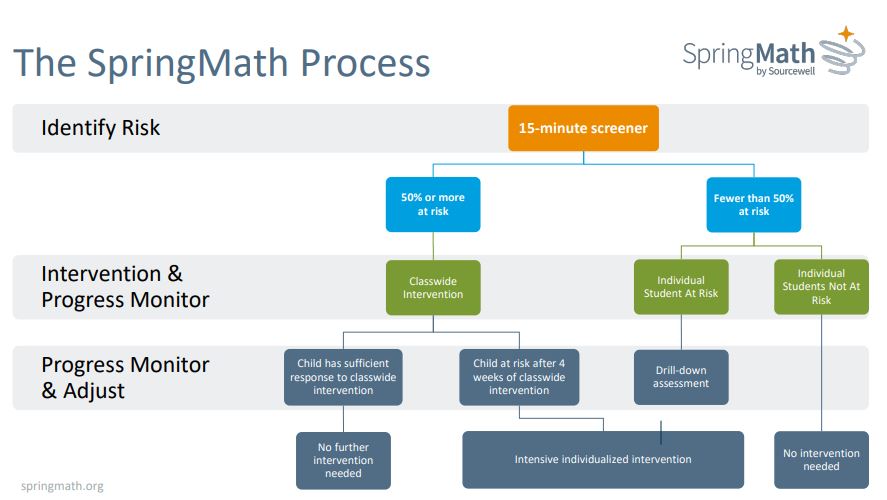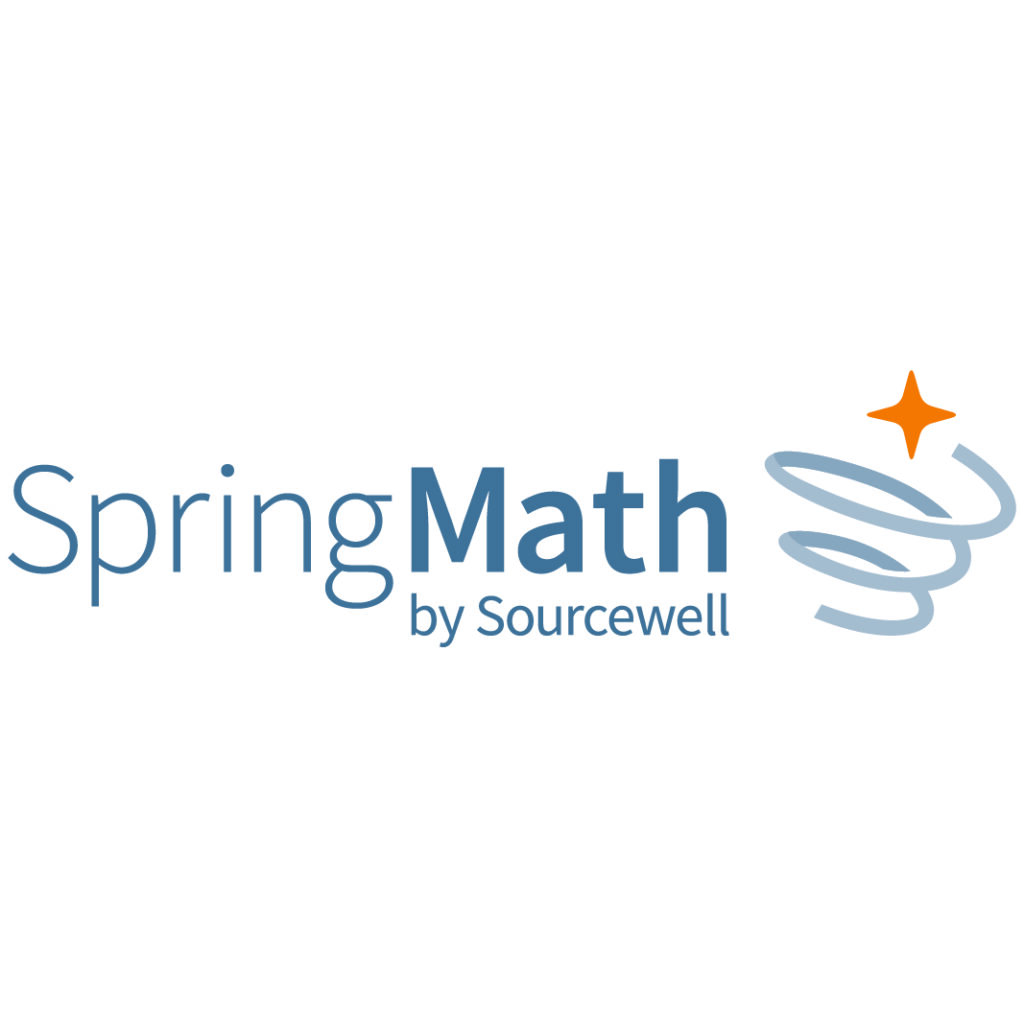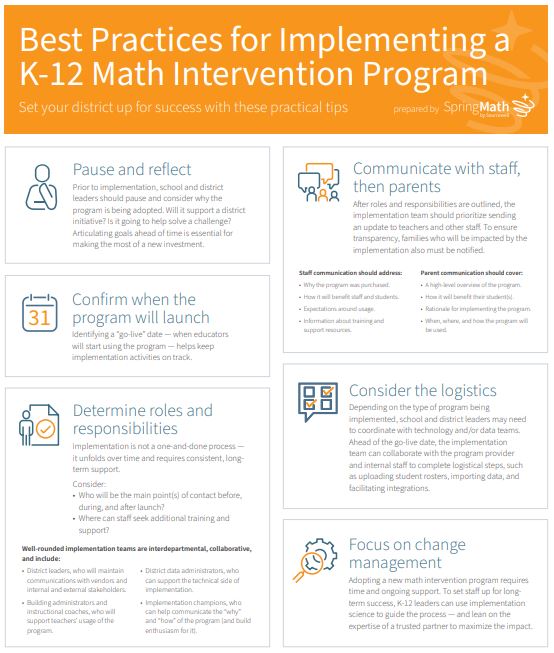Best Practices for Implementing a K–12 Math Intervention Program
Your school or district has decided to invest in a math intervention solution—or maybe you’re narrowing down your options. Regardless of where you are in your math intervention program journey, a key consideration is implementation. While often overlooked, a robust implementation plan enables the success of any program.
From identifying your goals to streamlining implementation with a proven process, here are some practical tips to ensure you get the most of out of your math intervention solution.
Pause and reflect
Prior to implementation, school and district leaders should pause and consider why the program is being adopted. Will it support a district initiative? Is it going to help solve a challenge? Articulating goals ahead of time is essential for making the most of a new investment.
Confirm when the program will launch
Identifying a “go-live” date—when educators will start using the program—helps keep implementation activities on track.
Determine roles and responsibilities
Implementation is not a one-and-done process—it unfolds over time and requires consistent, long-term support.
Consider:
- Who will be the main point(s) of contact before, during, and after launch?
- Where can staff seek additional training and support?
Well-rounded implementation teams are interdepartmental, collaborative, and include:
- District leaders, who will maintain communications with vendors and internal and external stakeholders
- Building administrators and instructional coaches, who will support teachers’ usage of the program
- District data administrators, who can support the technical side of implementation
- Implementation champions, who can help communicate the “why” and “how” of the program (and build enthusiasm for it)
Communicate with staff, then parents
After roles and responsibilities are outlined, the implementation team should prioritize sending an update to teachers and other staff. To ensure transparency, families who will be impacted by the implementation also must be notified.
Staff communication should address:
- Why the program was purchased
- How it will benefit staff and students
- Expectations around usage
- Information about training and support resources
Parent communication should cover:
- A high-level overview of the program
- How it will benefit their student(s)
- Rationale for implementing the program
- When, where, and how the program will be used
Consider the logistics
Depending on the type of program being implemented, school and district leaders may need to coordinate with technology and/or data teams. Ahead of the go-live date, the implementation team can collaborate with the program provider and internal staff to complete logistical steps, such as uploading student rosters, importing data, and facilitating integrations.
Focus on change management
Adopting a new math intervention program requires time and ongoing support. To set staff up for long-term success, K–12 leaders can use implementation science to guide the process—and lean on the expertise of a trusted partner to maximize the impact.
Download the “Best Practices for Implementing a K-12 Math Intervention Program” infographic here.
Implementation with a proven process

The SpringMath team puts people at the center of every engagement—and that makes all the difference. It’s a unique method called the Sourcewell Technology Advantage, which combines a user-focused approach with a proven process for successful change management. To provide leadership, communication, organization, and strategy during implementation, the SpringMath team equips district partners with:
- A dedicated implementation specialist who guides the process every step of the way
- Consistent communication to celebrate wins, address concerns, and ensure SpringMath is making an impact
- Support staff who are available to assist users and resolve issues
- Consultants who are experts in Multi-Tiered Systems of Support and math instruction
- A support portal with timely and helpful videos, documentation, and additional materials
SpringMath is exclusively provided by Sourcewell Technology, a division of Sourcewell. Sourcewell is a self-funded government organization that partners with education institutions, government entities, and nonprofits.

Does your school or district currently have a math intervention solution or program? If not, what’s your biggest obstacle to implementing one?
Sponsored Content Disclaimer:
Sponsored Content in Partnership With NASSP
NASSP allows select groups to share information and thought leadership with our program audiences.


